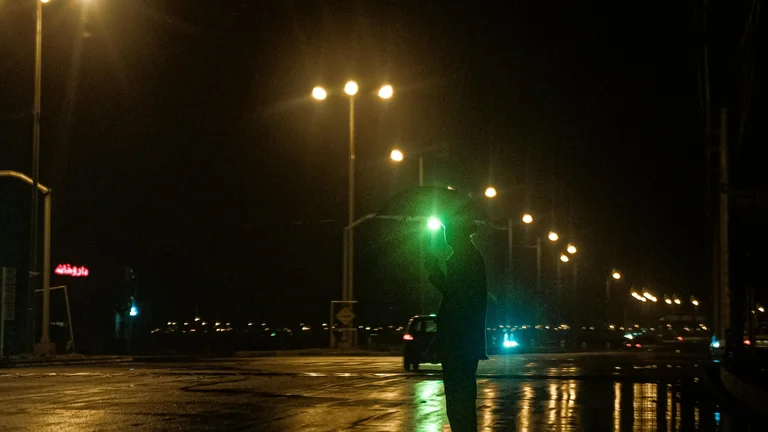The Significance of Beach Confession Scenes in Dramas

Confession scenes in dramas hold a unique place in storytelling, often serving as pivotal moments that shift the dynamics between characters. Among the myriad settings that filmmakers and scriptwriters choose, the beach stands out as a particularly evocative location for these emotional revelations. The open horizon, the rhythmic sound of waves, the shifting sands, and the interplay of natural light create a distinct ambiance conducive to vulnerability and honesty. This setting provides both characters and viewers a metaphorical and literal backdrop of openness and transition—a space where secrets can be shed and truths unveiled.
The beach inherently symbolizes freedom, renewal, and the passage of time, qualities that resonate deeply with the theme of confession. When a character admits their feelings or secrets by the shore, it reflects their longing for change or release from emotional burdens. The vastness of the ocean acts as a silent witness, amplifying the confessor’s sincerity while providing a calming counterpoint to the intensity of the confession itself. This juxtaposition often heightens viewer emotional engagement.
Beyond symbolism, confession scenes on the beach utilize cinematic tools—such as natural lighting during sunset or sunrise, slow-motion captures of waves, and the intimate proximity of characters—to intensify the narrative’s emotional impact. The beach’s sensory richness lends authenticity and sensuality to such scenes, deepening audience connection.
The appeal of beach confession scenes also stems from their ability to move characters from isolation to connection. The openness of the setting contrasts with the usual enclosed or urban backdrops of dramas, allowing characters to physically and emotionally step out of their routines. This spatial shift mirrors the internal transformation they undergo as they reveal their truths.
In essence, the beach is more than just a visually stunning location for confessing love or secrets in dramas; it is an integral narrative device that embodies freedom, vulnerability, and change. Understanding these layers enhances appreciation of why many of the best confession scenes find their home beside the ocean.
Iconic Beach Confession Scenes in Asian Dramas
Asian dramas, including Korean, Japanese, and Chinese productions, frequently employ beach confession scenes to depict moments of emotional climax. These scenes reflect cultural nuances and storytelling styles that merge poetic sensibilities with character-driven drama, making them particularly memorable for audiences worldwide.
One iconic example is from the Korean drama "Something in the Rain" where the beach serves as the backdrop for a tender confession between the lead characters. The scene’s power lies not just in the words spoken, but in the gentle interplay of natural elements and unspoken emotions. The protagonists stand at the edge where the waves break, symbolizing both hesitation and the washing away of doubt. The director’s choice to film during twilight adds a soft silhouette effect, enhancing the intimacy despite the openness.
In Japanese dramas, beach confessions often carry a blend of restraint and poetic expression, reflecting cultural preferences for subtlety. For instance, in the drama "Beach Boys," the confession is understated yet emotionally charged. Characters converse with the ocean breeze and the seagulls’ cries providing ambient texture, suggesting the confession is part of a larger natural cycle. The quiet reverence for nature visible in these scenes contrasts sharply with the inner turmoil, generating a tension that resonates with viewers.
Chinese dramas often use beach confession scenes to juxtapose traditional values with modern relationship dynamics. In "Love O2O," a standout scene places the confession amid a busy beach where the noise and activity contrast with the personal moment unfolding between the couple. The cacophony outside spotlights the courage it takes to open one’s heart openly in a public space, reinforcing the theme of vulnerability against a backdrop of societal expectations.
These dramas share notable cinematic techniques in beach confession scenes, typically emphasizing natural lighting changes, close-up shots on facial expressions, and the use of environmental soundscapes like crashing waves or distant boat horns. Camera movements tend to be slow and deliberate, mirroring the pacing of emotions being revealed.
Collectively, these iconic beach confession scenes from various Asian dramas exhibit how cultural storytelling shapes the portrayal of vulnerability and honesty, while universally leveraging the beach as a setting that visually and symbolically supports transformative emotional moments.
Elements That Make Beach Confession Scenes Unforgettable
Creating a memorable beach confession scene involves more than placing characters by the shore. There are multiple critical elements that, when combined skillfully, yield moments that linger with audiences.
Firstly, the timing of the scene within the narrative is crucial. Confessions near the beach often come at a decisive plot point where relationships stand at a crossroads. If timed too early, the scene may lack significance; too late, it risks feeling anti-climatic. Writers balance this by embedding confessions where tension peaks or where character obstacles have been sufficiently developed.
Secondly, authentic dialogue that captures vulnerability without melodrama strengthens the scene’s credibility. The words spoken are often simple yet deeply revealing, focusing on emotions such as fear, hope, regret, or longing. The beach’s natural serenity allows these emotions to resonate without artificial flourish, encouraging viewers to feel rather than just hear the confession.
Thirdly, the use of body language and physical space plays a large role. Confessors and recipients often exhibit subtle gestures—hesitant glances, tentative hand reaches, or bodily orientation towards the ocean instead of each other—to express uncertainty, nervousness, or resolve. The wide-open beach contrasts with these intimate actions, emphasizing the tension between privacy and openness.
Lighting and cinematography are also integral. Many unforgettable scenes utilize golden hour lighting—either dawn or dusk—to symbolically depict new beginnings or the closing of chapters. The soft light contours faces and glimmers on water, imbuing the scene with warmth and tenderness. Camera angles vary, with close-ups capturing raw emotion and wider shots contextualizing the characters within the vastness of the beach and sea.
Sound design enhances immersion. The rhythmic crash of waves complements the cadence of speech, while silence or minimal background music heightens intensity. Occasionally, natural elements like seagulls or wind serve as metaphors for freedom or turmoil within the narrative.
Another vital aspect is the pacing of the scene. Confession sequences on the beach are often slower, allowing space for pauses, breathless moments, and reflective silence. This pacing respects the gravity of the confession and allows emotional beats to settle with the audience.
These elements combine to create scenes that transcend mere plot function and instead become cinematic moments that capture the complexity of human emotions against a natural setting that amplifies their significance.
Step-By-Step Analysis: Crafting a Perfect Beach Confession Scene
Every successful beach confession scene unfolds through a layered construction of setting, character interplay, dialogue, and cinematic techniques. Below is a detailed breakdown of how drama creators typically mold these scenes for maximum emotional resonance.
1. Setting the Scene: Directors often choose a time of day that complements the scene’s mood—sunset for romantic warmth, early morning for new beginnings, or dusk for bittersweet confessions. The choice of an isolated beach versus a lively shore also influences the tone; isolation brings intimacy, while activity introduces external pressures.
2. Character Preparation: Characters are often shown in preceding scenes grappling with their emotions, hinting at the upcoming confession without explicit disclosure. This narrative buildup ensures the confession feels earned and impactful when it occurs.
3. Establishing Visual Symbolism: Objects or natural elements are incorporated symbolically—shells representing fragility, waves indicating emotional ebb and flow, or footprints in the sand symbolizing transient moments. These visual cues deepen the scene's thematic layers.
4. Dialogue Delivery: Actors deliver lines with controlled pacing, often interspersed with meaningful pauses. The script emphasizes simplicity and sincerity, avoiding clichés. The confessor’s vulnerability emerges through soft tones, hesitation, or raised volume reflecting emotional peaks.
5. Interaction and Physicality: Gestures such as reaching out to touch the other’s hand, looking away to hide nervousness, or stepping closer to bridge emotional distance are choreographed carefully. These non-verbal cues significantly communicate unspoken feelings.
6. Cinematography and Perspective: Camera movements transition smoothly, starting with wider shots that capture environmental beauty and gradually closing in on faces to reveal subtleties. Use of slow motion or handheld footage adds realism or dramatic tension depending on the atmosphere.
7. Sound and Music: Ambient beach sounds are layered subtly under dialogue, often complemented by minimalistic music scores emphasizing tenderness or suspense. Silence may be used creatively to allow moments of emotional weight.
8. Resolution: The scene may end in acceptance, regret, or open-ended uncertainty, influencing subsequent plot trajectories. The camera may linger on characters as they process the confession, backing away slowly to signify emotional distance or connection.
This structured approach ensures that beach confession scenes deliver on multiple sensory and emotional levels, resulting in memorable moments that strongly connect with audiences.
Comparative Table: Key Beach Confession Scenes Across Genres
Beach confession scenes occur across various drama subgenres, each adapting the core tropes to fit their narrative style. The following table contrasts notable characteristics in romantic, melodrama, fantasy, and coming-of-age dramas to illustrate diverse applications of this setting.
| Aspect | Romantic Dramas | Melodramas | Fantasy Dramas | Coming-of-Age Dramas |
|---|---|---|---|---|
| Emotional Tone | Tender, hopeful, intimate | Intense, heartbreaking, dramatic | Mysterious, surreal, symbolic | Reflective, nostalgic, bittersweet |
| Setting Characteristics | Calm, sunset-lit, isolated beach | Stormy, rough waters, desolate shore | Enchanted, otherworldly environment | Bright day, lively beach with peers |
| Character Interaction | Direct, heartfelt verbal confession | Emotional outbursts, tears, confrontation | Subtle hints, metaphorical dialogue | Unspoken feelings, awkwardness, silence |
| Cinematographic Style | Soft focus, warm colors, close-ups | Dynamic cuts, dramatic lighting, shadows | Special effects, ethereal filming | Natural light, candid handheld shots |
| Outcome | Often acceptance and new beginnings | Tragic or unresolved tension | Mystery remains or revelation | Growth and self-awareness |
Understanding these differences aids in appreciating how versatile the beach confession scene format can be, adapting to different emotional climates and narrative expectations while still utilizing the intrinsic symbolism and visual appeal of the seaside location.
Practical Tips for Aspiring Screenwriters and Directors
For those intent on creating impactful beach confession scenes, several practical considerations can enhance authenticity and emotional depth. These tips stem from analyzing successful dramas and the common challenges encountered during production.
- Scout Authentic Locations: Choose a beach that complements the scene’s emotional tone. An overpopulated tourist spot may detract unless the story requires public confession dynamics. Consider weather, tides, and natural features that can be incorporated symbolically.
- Leverage Natural Lighting: Plan shooting schedules around sunrise or sunset to capture warm, cinematic light that enhances mood. Cloud cover and reflections on water can also be valuable for varying the scene’s atmosphere.
- Emphasize Subtlety in Dialogue: Write lines that are honest yet understated. Let silence or gazes carry as much weight as spoken words, especially since the visuals will strongly convey emotion.
- Work with Actors on Non-Verbal Expression: Encourage exploring gestures, micro-expressions, and body language during rehearsals. These can make the scene feel lived-in rather than scripted.
- Incorporate Ambient Sound Thoughtfully: Record natural sounds, such as wind, waves, or bird calls, to layer into the scene. Avoid overpowering music that might overshadow the confession’s subtlety.
- Consider Camera Techniques: Use slow zooms, steady tracking shots, or point-of-view angles to engage audiences intimately. Experiment with angles that blur the horizon or isolate characters visually to mirror emotional states.
- Plan for Weather Contingencies: Outdoor shoots are susceptible to weather changes. Have backup plans or alternative shooting days to maintain the desired scene quality.
- Retain Narrative Pacing: Balance the confession scene’s duration to avoid dragging or rushing. Allow sufficient space for emotional beats but maintain story momentum.
Applying these recommendations increases the likelihood that the beach confession scene will resonate authentically with viewers, contributing substantially to the drama’s overall impact.
Case Study: Analysing the Beach Confession Scene in "Reply 1988"
The Korean drama "Reply 1988" features a notably impactful beach confession scene that serves as a quintessential example of the setting’s narrative potential. This moment reveals the layered technique used by the creators to capture a complex web of feelings through a deceptively simple setup.
The scene takes place during a group outing at a modest, quiet beach. The modesty of the location—unlike a dramatic cliff or exotic island—grounds the scene in realism. The confessor hesitates before finally admitting a long-held affection, amid the ambient chatter of friends and gentle waves. The cinematography uses natural daylight and unobtrusive camera work, focusing intently on facial expressions rather than sweeping vistas.
The dialogue is deliberately concise and poignant, capturing an unembellished truth without theatrical excess. The confession’s timing follows character arcs developed over multiple episodes, making it highly satisfying and believable. The recipient's subtle reactions, including a brief smile and hesitant touch, communicate volumes about hope and uncertainty.
Furthermore, the presence of friends in the background does not diminish intimacy but rather contrasts the public risk of confession with private vulnerability. The sound design balances natural beach sounds and quiet instrumental music, enriching the emotional texture.
This scene exemplifies how a beach confession in a slice-of-life drama can utilize simplicity, interpersonal dynamics, and careful technical choices to evoke genuine emotion without resorting to melodrama. It remains a beloved moment among viewers and serves as a blueprint for blending setting and storytelling seamlessly.
Psychological Impact of Beach Confessions on Audience Engagement
Confession scenes by the beach do not merely serve narrative function but also influence how audiences emotionally engage with the drama. Psychologically, these scenes trigger empathy, anticipation, and catharsis through several mechanisms.
The natural setting promotes a sense of calm and openness in viewers, lowering emotional defenses and fostering connection with characters. The visual expansiveness mirrors the narrative release of pent-up emotions, allowing audiences to vicariously experience liberation alongside characters.
Moreover, scripts often leverage uncertainty and vulnerability central to confessions, which humans naturally respond to with focused attention and emotional mirroring. The beach, with its timeless rhythms, acts as a grounding force that tempers the scene’s intensity, preventing emotional overload.
Neuroscientific studies indicate that scenes involving heartfelt personal revelations activate brain areas associated with empathy and social cognition. When such scenes are set in visually rich yet calming environments like beaches, they can deepen emotional resonance by anchoring internal feelings in external sensory experiences.
Additionally, many viewers associate beaches with positive memories or vacations, invoking nostalgia that colors their response. Filmmakers harness this unconscious linkage to amplify the confession’s tenderness and emotional stakes.
In effect, the combination of natural symbolism, sensory stimuli, and narrative context in beach confession scenes creates layered psychological engagement, enhancing viewer satisfaction and long-term memorability.
Frequently Used Themes in Beach Confession Scenes
While each beach confession scene is unique, certain thematic threads recur consistently across dramas, tapping into universal human experiences.
- Vulnerability and Exposure — The physical openness of the beach mirrors emotional exposure, making characters’ confessions raw and powerful.
- Transition and Renewal — Waves washing the shore symbolize cycles of change, underscoring moments of personal transformation.
- Hope and Uncertainty — Confession scenes often balance the promise of new beginnings against the risk of rejection or change.
- Isolation and Connection — The spatial setting alternates between solitude and shared space, reflecting characters' inner conflicts between fear and desire for connection.
- Time and Memory — Beaches evoke timelessness and nostalgia, complementing confessions that often hinge on past experiences or future hopes.
Recognizing these motifs helps understand why beach confession scenes continue to captivate audiences, blending the physical environment with deep emotional storytelling.
FAQ - Best Confession Scenes at the Beach in Dramas
Why are beach confession scenes so popular in dramas?
Beach confession scenes are popular because the natural, open setting symbolically represents vulnerability and emotional openness, enhancing the impact of personal revelations in dramas.
What makes a beach confession scene emotionally effective?
Factors such as authentic dialogue, timing within the narrative, natural lighting, body language, and sound design work together to create emotionally effective beach confession scenes.
Which drama genres commonly use beach confession scenes?
Romantic dramas, melodramas, fantasy dramas, and coming-of-age stories frequently feature beach confession scenes, each adapting the setting to fit their thematic needs.
How can screenwriters craft a believable beach confession scene?
Screenwriters should focus on character development, understated dialogue, symbolic use of the setting, pacing, and integrating natural elements to craft believable and impactful beach confession scenes.
What psychological effects do beach confession scenes have on viewers?
These scenes foster empathy and emotional engagement by combining vulnerability with calming natural settings, activating viewer social cognition and memories linked to beaches.
Beach confession scenes in dramas stand out for their symbolic use of the natural setting to amplify emotional vulnerability and connection. Leveraging timing, dialogue, and cinematic techniques, these scenes create memorable, transformative moments across multiple genres, deeply engaging audiences and elevating character development.
Beach confession scenes remain a timeless device in drama storytelling due to their rich symbolic setting and emotional versatility. When crafted thoughtfully, these scenes leverage natural elements, nuanced performances, and cinematic techniques to create profound moments of vulnerability and transformation. The beach’s openness mirrors characters’ emotional exposure, inviting viewers into intimate exchanges that shape character arcs and narratives deeply. Whether in romantic, fantasy, or coming-of-age dramas, the beach confession scene continues to captivate audiences worldwide through its blend of visual beauty and heartfelt honesty.






